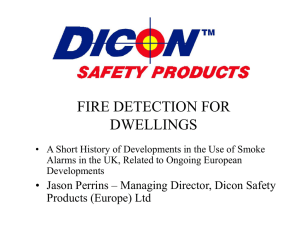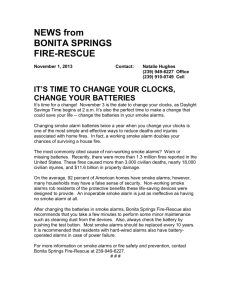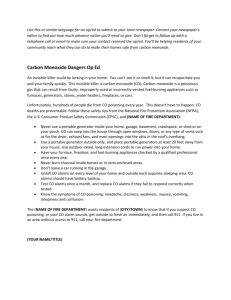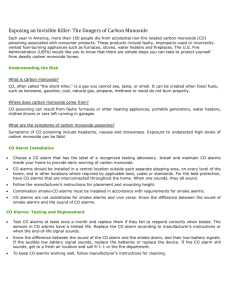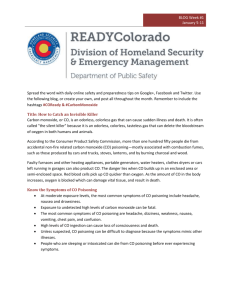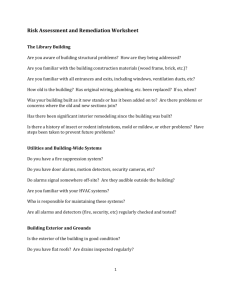Smoke Detector Law Takes Effect July 1st
advertisement
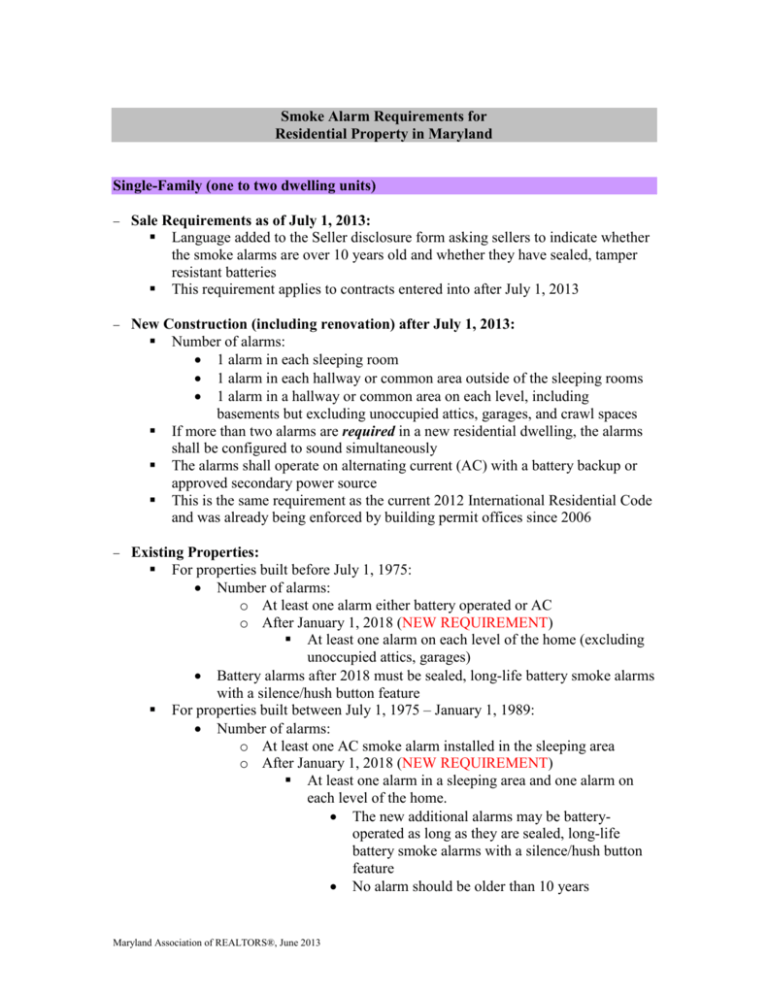
Smoke Alarm Requirements for Residential Property in Maryland Single-Family (one to two dwelling units) Sale Requirements as of July 1, 2013: Language added to the Seller disclosure form asking sellers to indicate whether the smoke alarms are over 10 years old and whether they have sealed, tamper resistant batteries This requirement applies to contracts entered into after July 1, 2013 New Construction (including renovation) after July 1, 2013: Number of alarms: 1 alarm in each sleeping room 1 alarm in each hallway or common area outside of the sleeping rooms 1 alarm in a hallway or common area on each level, including basements but excluding unoccupied attics, garages, and crawl spaces If more than two alarms are required in a new residential dwelling, the alarms shall be configured to sound simultaneously The alarms shall operate on alternating current (AC) with a battery backup or approved secondary power source This is the same requirement as the current 2012 International Residential Code and was already being enforced by building permit offices since 2006 Existing Properties: For properties built before July 1, 1975: Number of alarms: o At least one alarm either battery operated or AC o After January 1, 2018 (NEW REQUIREMENT) At least one alarm on each level of the home (excluding unoccupied attics, garages) Battery alarms after 2018 must be sealed, long-life battery smoke alarms with a silence/hush button feature For properties built between July 1, 1975 – January 1, 1989: Number of alarms: o At least one AC smoke alarm installed in the sleeping area o After January 1, 2018 (NEW REQUIREMENT) At least one alarm in a sleeping area and one alarm on each level of the home. The new additional alarms may be batteryoperated as long as they are sealed, long-life battery smoke alarms with a silence/hush button feature No alarm should be older than 10 years Maryland Association of REALTORS®, June 2013 For properties built between January 1, 1989 – July 1, 1990: Number of alarms: o At least one alarm outside of each sleeping area and on each additional story of the home, including the basement but not unoccupied attics, garages or crawl spaces o Alarms must be AC and interconnected to alarm simultaneously o After January 1, 2018 (NEW REQUIREMENT) No change to the number of alarms, but no alarm should be older than 10 years For properties built between July 1, 1990 and July 1, 2013: Same requirement as the Jan. 1 1989 – July 1, 1990 properties except that the alarms must be AC AND have battery back-up NOTE: some counties required more stringent rules including alarms in each bedroom for new construction Single-Family Rentals (one to two dwelling units) after July 1, 2013 (NEW REQUIREMENT) Alarms must be upgraded if: Existing alarms exceed 10 years from date of manufacture Existing alarms fail to operate or malfunction A change in tenancy occurs and the residence has not been previously equipped with sealed, long-life battery smoke alarms with silence/hush button features AC alarms must be upgraded to new AC alarms Battery alarms must be upgraded to sealed, long-life battery smoke alarms with silence/hush button features Alarms must be located on each level of the residence excluding unoccupied attics, garages, or crawl spaces Any additional alarm required by the new law may be battery operated as long as it is a sealed, long-life battery with silence/hush button features Multi-Family Rentals (more than two dwelling units) Alarms must be AC powered Multi-family units constructed after July 1, 1990 must be AC powered with battery back-up Landlords must provide special alarms for the deaf or hard of hearing, and may require reimbursement for those alarms Landlords are responsible for the installation, repair and replacement of smoke alarms Tenants are responsible for testing the units and notifying the landlord in writing of the failure or malfunction of the unit No alarms should be older than 10 years unless the alarms have been sensitivity tested and properly calibrated on an annual basis per current fire codes Maryland Association of REALTORS®, June 2013


